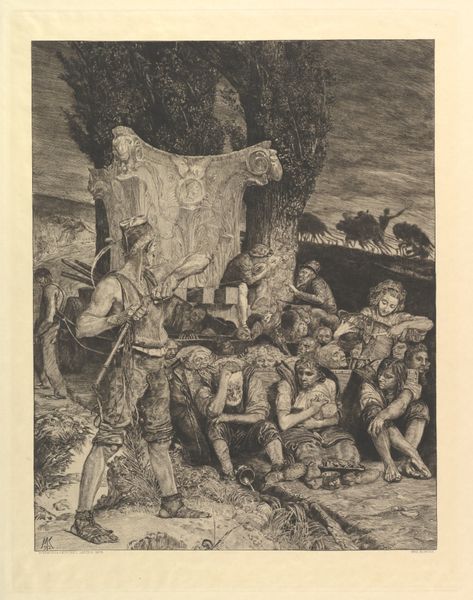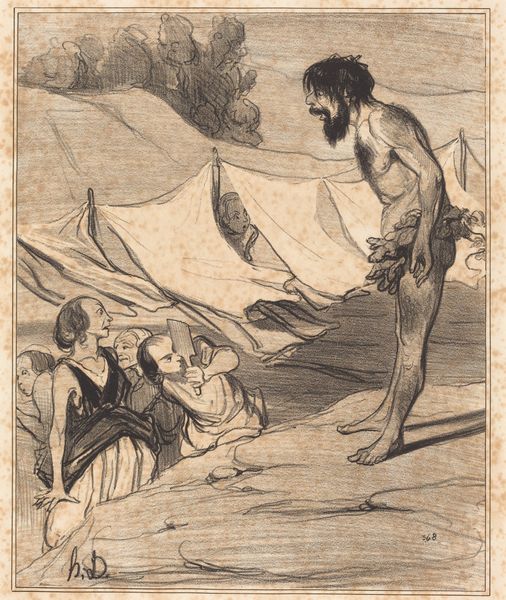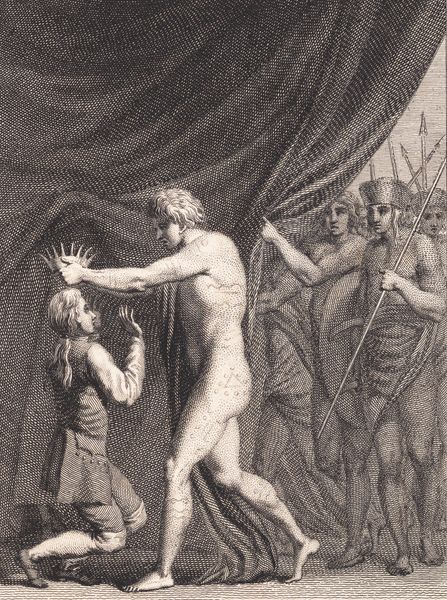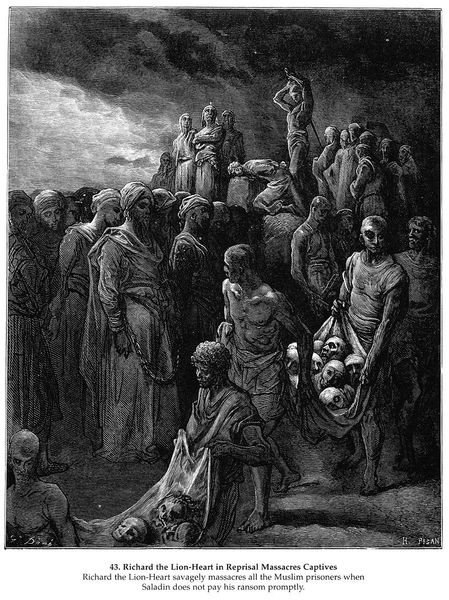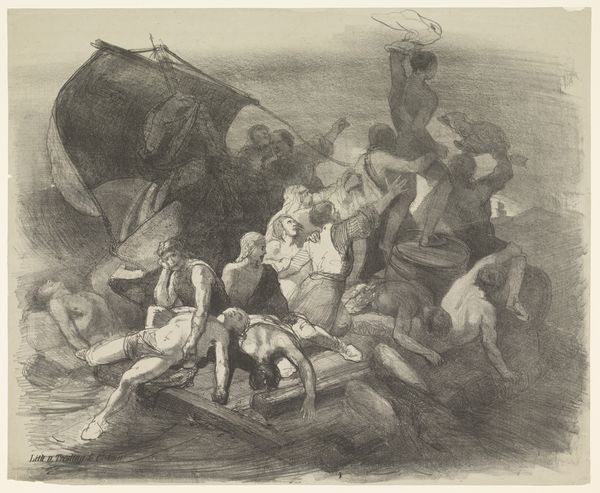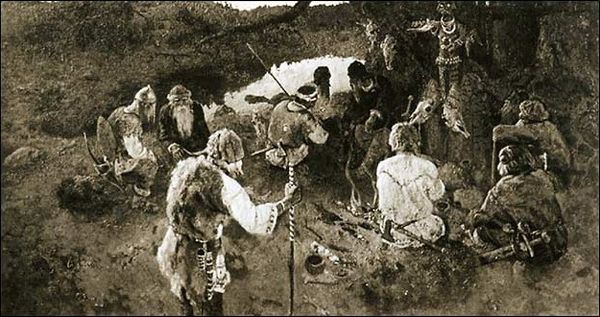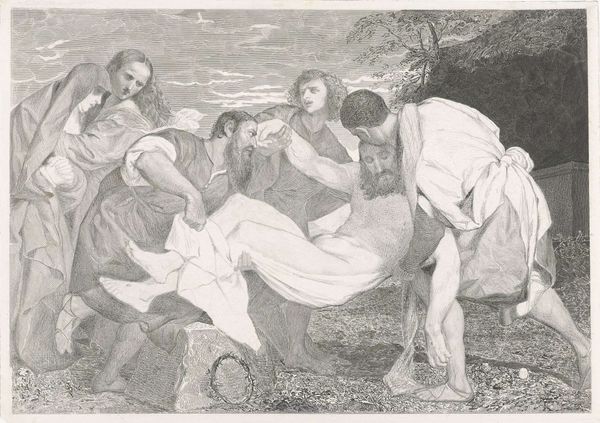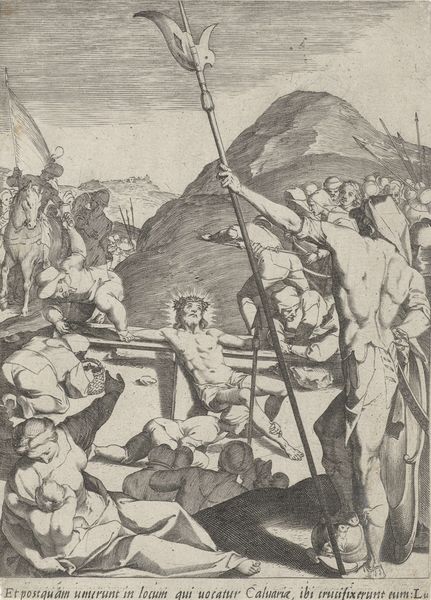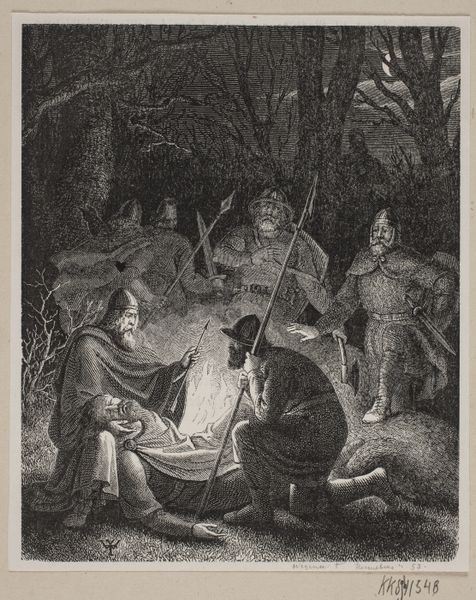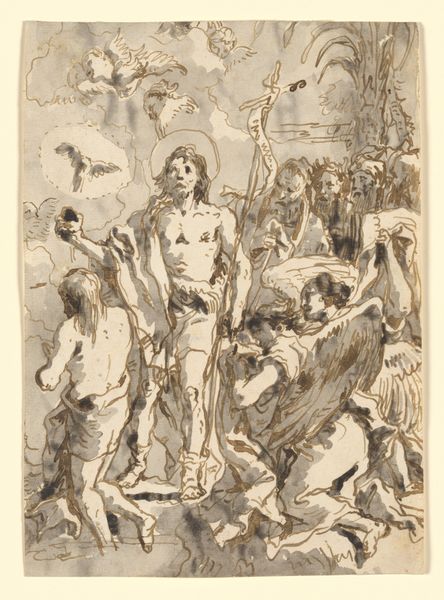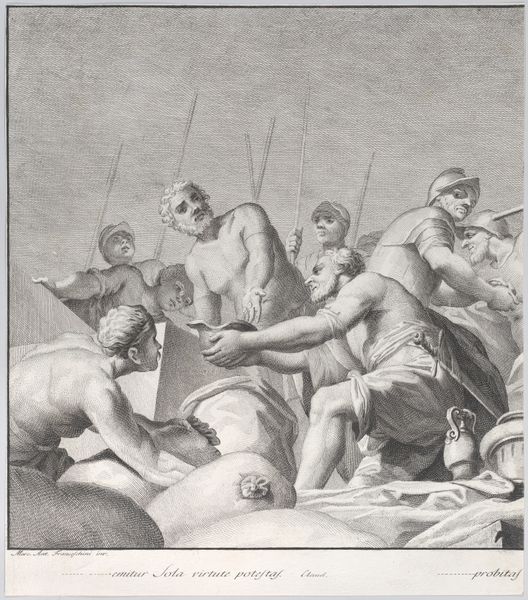
print, engraving
#
narrative-art
# print
#
figuration
#
history-painting
#
academic-art
#
engraving
#
realism
Dimensions: sheet: 20.48 × 14.61 cm (8 1/16 × 5 3/4 in.)
Copyright: National Gallery of Art: CC0 1.0
Editor: So this engraving is called *David Playing Before Saul*, it's by Emanuel Leutze, and it's from 1853. It feels…theatrical. There’s so much tension in Saul's expression, and David seems to be in his own world. How do you read this piece? Curator: This print really captures the complex power dynamics at play, doesn’t it? Leutze, painting mid-19th century, reflects a Western fascination with Biblical narratives, but filtered through a lens of his own era. The image depicts David attempting to soothe Saul with music, yet we see, quite explicitly, the seeds of paranoia and violent impulse. Consider the presence of armed guards, the agitated figure with the raised hand, even the racialized figures at the bottom corner: how do these elements impact our understanding of Saul’s inner turmoil? Editor: That's a good point, it isn't a quiet, intimate moment at all. I suppose I was focusing too much on David and Saul without acknowledging how the whole scene is structured around Saul's anxieties. Curator: Exactly! Think about what's not being said. Saul represents authority threatened, and David, an outsider, represents an unsettling potential for change. What can that tension tell us about Leutze's anxieties, painting as he was in the buildup to the Civil War? Editor: So you’re saying it’s not *just* a straightforward depiction of a Bible story, it also holds a mirror up to the anxieties and societal divisions of Leutze's own time? The visual cues around the fringes communicate as much, if not more, than the "main" narrative itself. Curator: Precisely. By exploring those layers of historical context, we move beyond simple representation, to understanding art as a product of very specific social and political forces. Editor: That really shifts my perspective! It's made me think about looking at other artwork as products of complex discussions about the past and the present. Curator: Absolutely, the relationship between an artwork and history becomes something we use together.
Comments
No comments
Be the first to comment and join the conversation on the ultimate creative platform.
